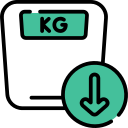Q. What is jaw claudication?
Doctor Answer is medically reviewed by SecondMedic medical review team.
Jaw claudication, or temporal arteritis syndrome, is a type of vascular disorder that affects the arteries in the head and neck, resulting in pain when chewing. It is caused by inflammation of an artery leading to the temporomandibular joint (TMJ) and its surrounding muscles. Symptoms may include severe jaw pain when opening or closing the mouth that radiates to other areas of the face and scalp; difficulty talking, eating, and swallowing; tenderness along one or both sides of the face; a feeling of fullness in your ear; vision problems such as blurred vision or blind spots.
The exact cause of TMJ syndrome is unknown but it has been linked to autoimmune diseases such as rheumatoid arthritis (RA), systemic lupus erythematosus (SLE), gout, polymyalgia rheumatica (PMR) and Takayasuarteritis. Other factors associated with TMJ syndrome include injury to the jaw joint from physical trauma such as whiplash or dental procedures like anterior orthodontic work. In some cases genetics may also play a role since there appears to be an increased risk for individuals who have certain genetic mutations in their family histories.
Treatment typically includes medications that reduce inflammation such as corticosteroids or non-steroidal anti-inflammatory drugs (NSAIDs). For more severe cases, doctors may recommend biologic medications such as etanercept injection which has been shown to provide relief for up to six months after treatment initiation. Physical therapy can also help alleviate muscle spasms around the jaw joint while psychological counseling may help manage stress which could lead to jaw clenching or teeth grinding behavior which could worsen symptoms over time if left unaddressed. Finally surgery is sometimes used if conservative treatments do not work and involves either fusion of joints between upper jawbones known as arthroplasty; replacement parts for worn out joint structures called prosthodontics; removal of inflamed tissue known as tenectomy and moving bones into better position known at osteotomy are possible treatments depending on severity how far advanced away from healing capacity patient appears upon initial consultation with specialist/surgeon/physician .
Related Questions
-
How does the endocrine system regulate metabolism and energy levels in the body? | Secondmedic
-
How to reduce blood sugar? | Secondmedic
-
Can thyroid be removed permanently? | Secondmedic
-
What are diseases of the thyroid gland? | Secondmedic
-
How does endocrinology help in managing diabetes effectively? | Secondmedic












